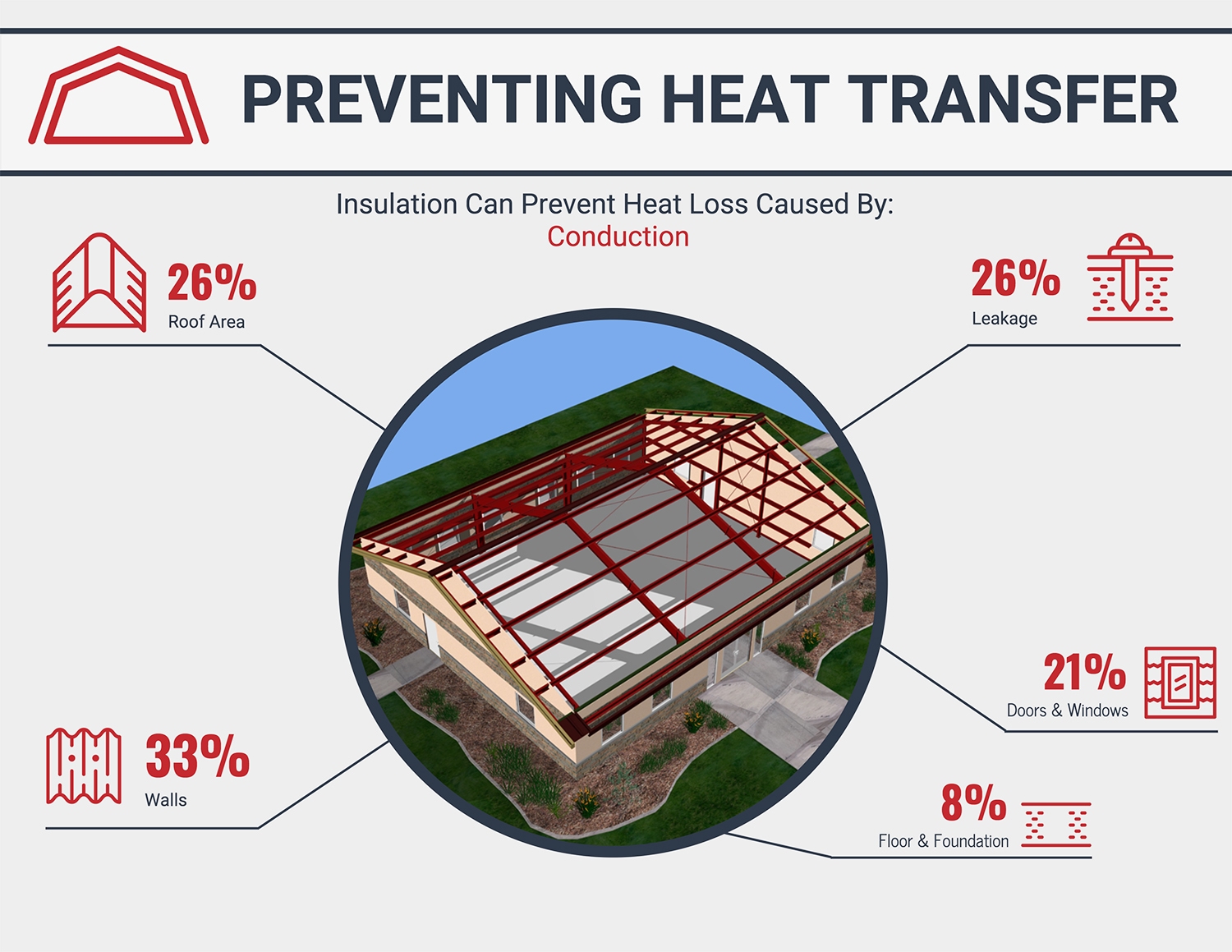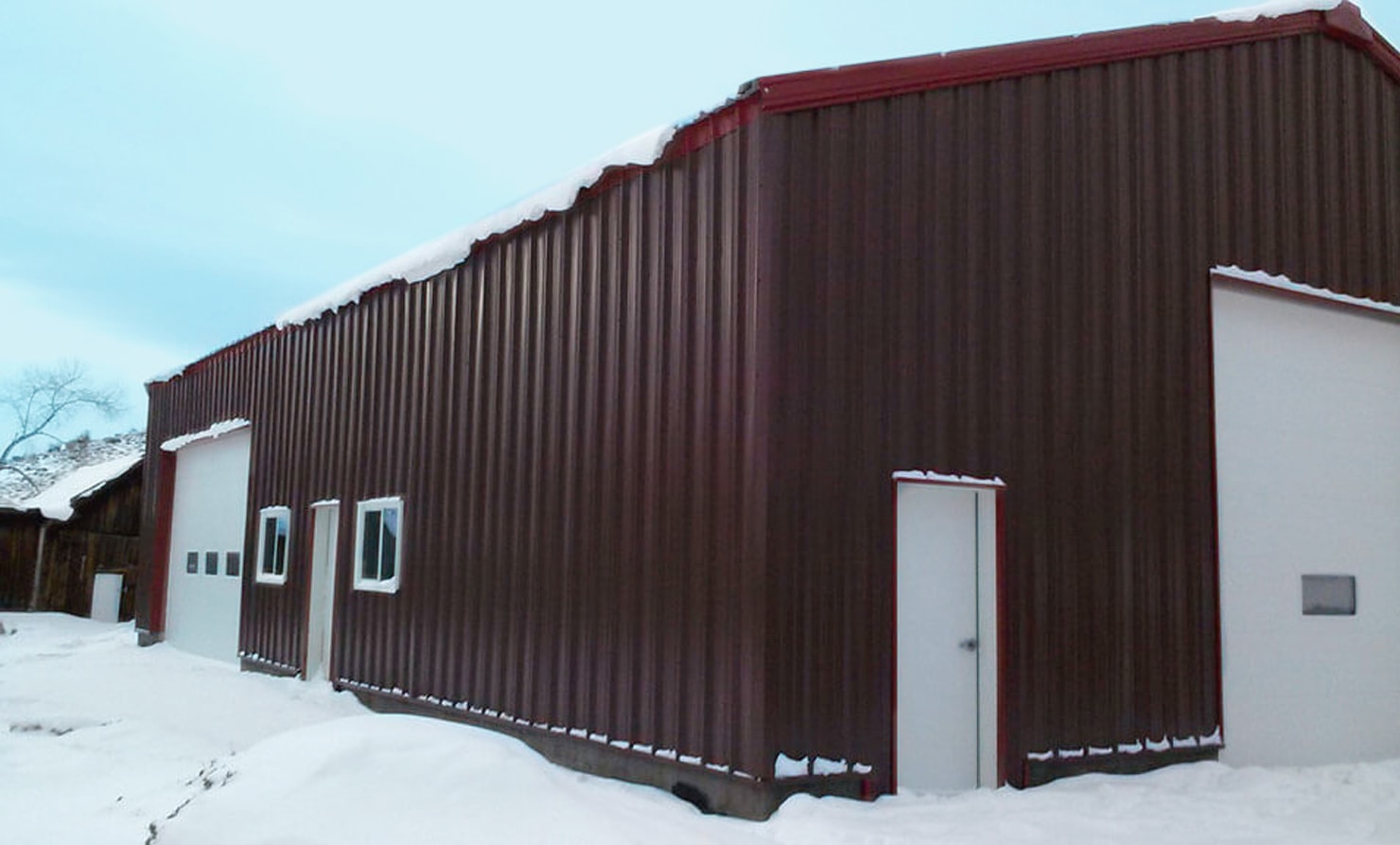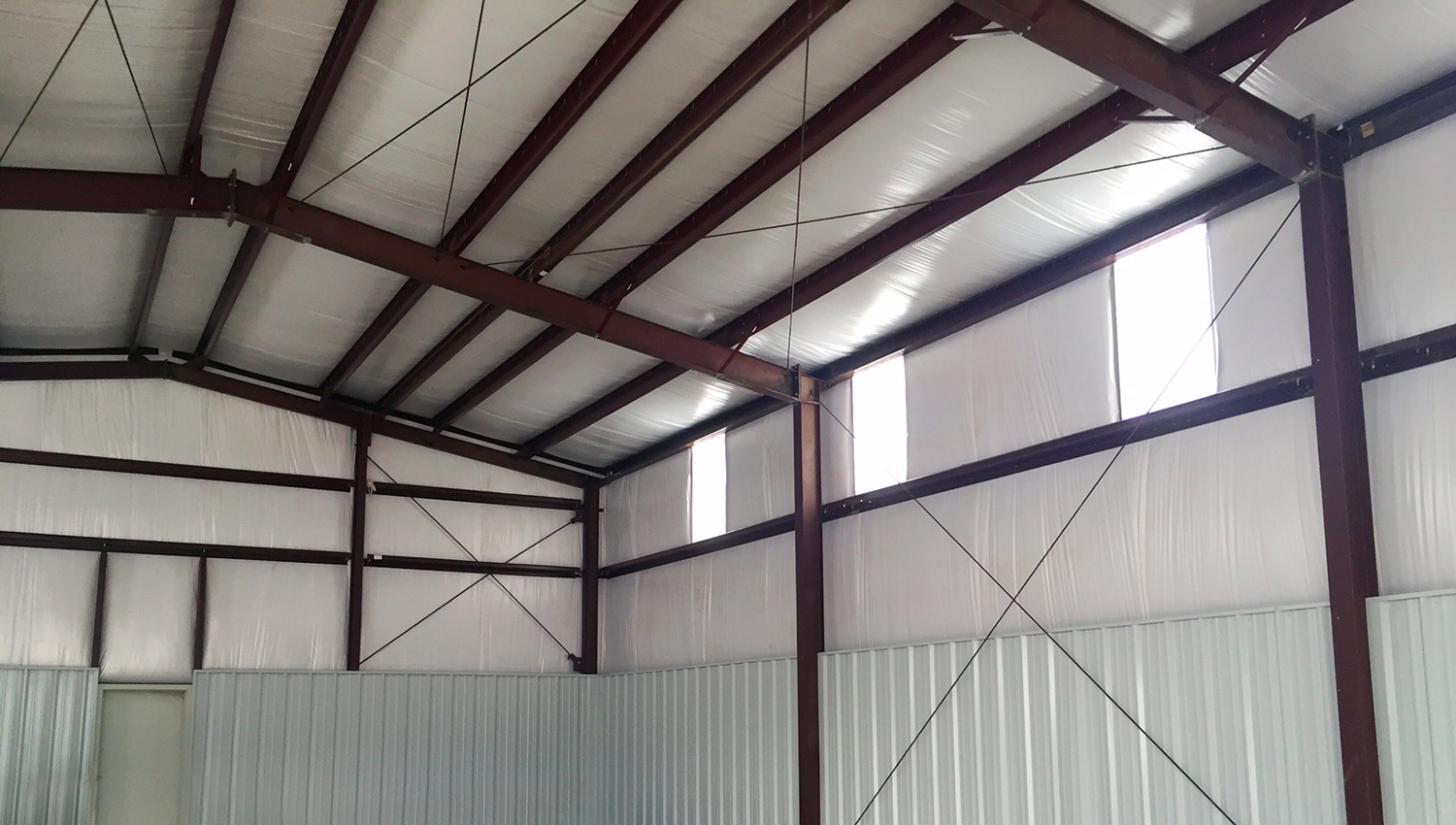

Why Water is a Threat to Your Building
Rust is caused by condensation and is one of the biggest threats to your steel building long-term. More specifically, your building’s structural integrity can be severely compromised if rust is allowed to collect around your building’s connections, bolts and screws. Not to mention mold and mildew is almost a guarantee in an enclosed moist environment. The good news is this potential problem is easy to prevent by selecting one of the metal building insulation options outlined below. Each has a corresponding R-Value which is a measure of the insulation’s ability to counteract condensation (higher is better).

How Condensation is Created
Condensation is created when warm air from inside your steel building comes into contact with a cold surface such as your roof or wall panels. This mixture between the warm air and cold exterior surface causes the water vapors in the warm air to condense allowing moisture to congregate. Insulation can help prevent condensation in the roof and walls of your metal building. Condensation is detrimental to the longevity of your building because it can cause rust. So while we will be sure to engineer your building for heavy snow, it’s up to you whether or not you choose to protect it from condensation by purchasing an insulation package.
Insulation R-Values by Type and Price Range
R-Value is a measure of the insulation’s ability to resist heat flow. The higher the number, the better it is at resisting heat flow. Below are R-Values for batt, foam board, insulated panels and spray foam by thickness. Insulated panels are the clear winner when it comes to R-Value!

Insulation FAQs
All insulation in a metal building should have the proper type of vapor barrier to control condensation. Therefore, spray foam is not accepted industry wide and not recommended because the foam can trap moisture within the area it has been sprayed and has no permeance level like vinyl backed fiberglass insulation. Given time, this trapped moisture can start to corrode and rust away the underside of the metal panels and eventually the purlins and other secondary members.
Steer clear of any steel building company who suggests that you don’t need insulation, but perhaps even more treacherous is a company who provides inferior insulation. Be sure to ask for photos of the type of insulation you will receive because there are companies providing what amounts to a low quality bubble wrap backed by aluminum foil.
Although metal carports do not require insulation many people who choose to construct this type of steel building do so because they plan to fill in the gaps with concrete blocks. Including its R-Value of 2-2.5 per inch, there are various reasons why you may choose to use concrete blocks rather than traditional steel wall panels, but the most common reason is increased security.

Concluding Advice on Buying Insulation
As we’ve discussed, insulation is not something you want to cut corners on and making sure it’s done right is essential to the long term durability of your building. Depending on the size of your building and what you’re planning on using the space for, you may want to purchase your insulation through your Project Coordinator at General Steel to ensure it’s done right. If you’re more of the do-it-yourself type, you can explore purchasing your insulation package locally. All things considered, metal building insulation prices will vary, but here’s a quick guide we put together by surveying multiple local insulation sources to give you an idea how much it will cost.